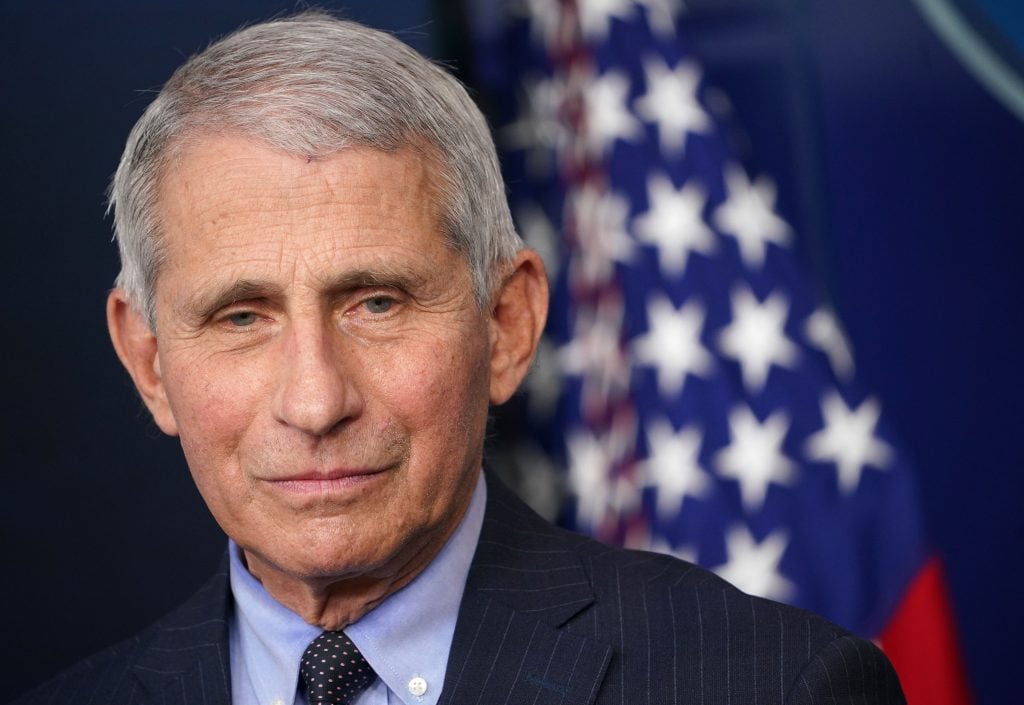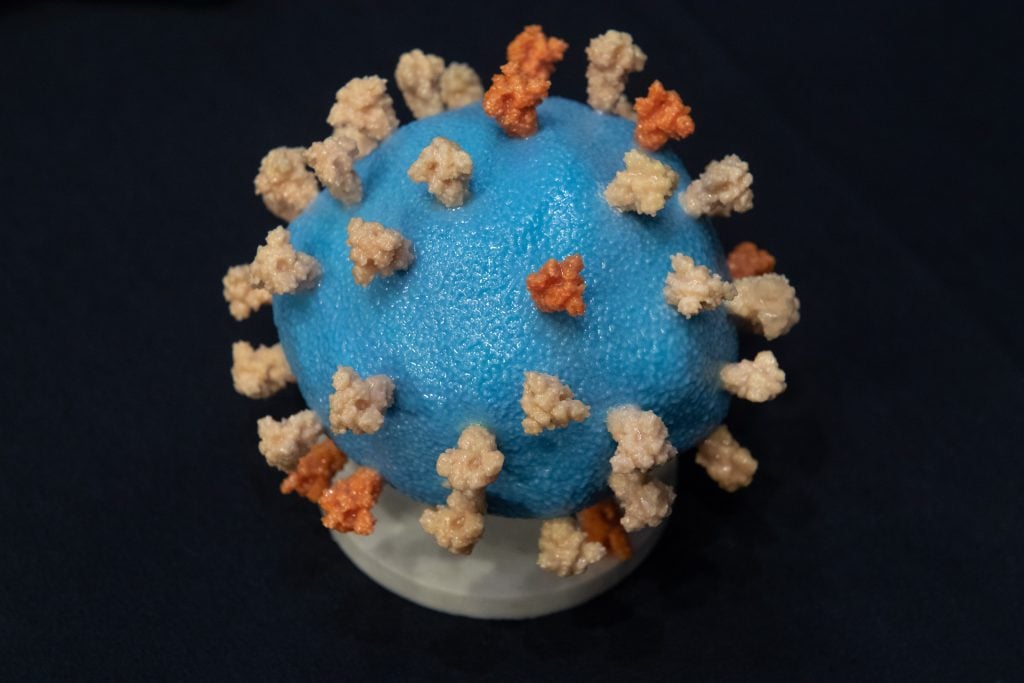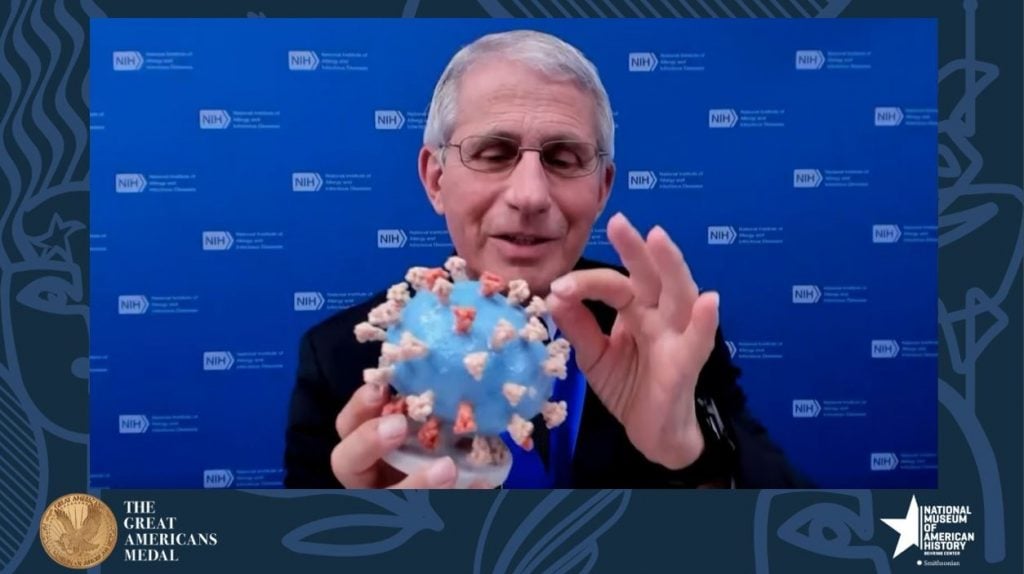Art World
Dr. Fauci Has Donated the 3-D Coronavirus Model He Used to Explain the Pandemic to the Public to the Smithsonian’s American History Museum
Many Americans will recognize the orange and blue model from Fauci's briefings.

Many Americans will recognize the orange and blue model from Fauci's briefings.

Sarah Cascone

The coronavirus is heading to the Smithsonian—but don’t be alarmed. It’s actually a 3-D printed model of the virus that Anthony Fauci donated to the Smithsonian’s National Museum of American History, in Washington, DC.
You might have spotted the blue and orange model, featuring the virus’s distinctive protein spikes—the part that latches onto and infects cells—in Fauci’s briefings. The director of the Institute of Allergy and Infectious Diseases at the National Institutes of Health and science advisor to President Joe Biden, has used it over the past 13 months to help explain the COVID-19 pandemic to Congress, journalists, and the public.
“I wanted to pick something that was really meaningful to me and important because I used it so often,” Fauci told the New York Times. “It’s a really phenomenally graphic way to get people to understand.”
The 80-year-old physician is the recipient of the museum’s annual Great Americans Medal, recognizing his decades-long career fighting infectious diseases, from the early years of the AIDS crisis to, most recently, leading the nation’s response to the coronavirus.

A model of COVID-19, known as coronavirus. Photo by Saul Loeb-Pool/Getty Images.
“This has been a terrible year in so many respects,” Fauci said during a livestreamed ceremony. “Decades from now, people will be talking about the experience that we went through.”
The acquisition of the model, which technically depicts the virus in its infectious form, the SARS-CoV-2 virion, is an extension of the Smithsonian’s ongoing efforts to collect artifacts related to the pandemic for posterity.
In April, the history museum formed a Rapid Response Collecting Task Force to acquire objects in real time, and it has been welcoming submissions from the public through the digital platform “Stories of 2020.” But even before the COVID-19 outbreak, the institution was planning a new exhibition, “In Sickness and In Health,” about disease in the US from colonial times to the present day, and the ways it has altered the course of history.

Anthony S. Fauci holds his personal 3D-printed model of the SARS-CoV-2 virion, which he is donating to the National Museum of American History, during the “Great Americans Awards Program.” Photo courtesy of the Smithsonian’s National Museum of American History, Washington, DC.
The museum hopes to augment its holdings with more objects linked to Fauci. “Dr. Fauci has helped save millions of lives and advanced the treatment and our understanding of infectious and immunologic diseases across more than five decades of public service,” museum director Anthea Hartig said in a statement. “His humanitarianism and dedication truly exemplify what it means to be a Great American.”
Currently, Fauci is part of a 1995 oral history featuring interviews about the AIDS epidemic. This year, the museum also acquired Francesca Magnani’s digital photo of a New York man wearing a T-shirt reading “Fauci,” and objects from when the doctor threw the ceremonial first pitch on the delayed opening day for the Washington Nationals baseball team in July.
Fauci previously received the Presidential Medal of Freedom, the nation’s highest civilian award, from President George W. Bush in 2008, in recognition of his long career in public health.